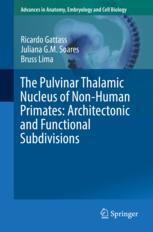

Most ebook files are in PDF format, so you can easily read them using various software such as Foxit Reader or directly on the Google Chrome browser.
Some ebook files are released by publishers in other formats such as .awz, .mobi, .epub, .fb2, etc. You may need to install specific software to read these formats on mobile/PC, such as Calibre.
Please read the tutorial at this link: https://ebookbell.com/faq
We offer FREE conversion to the popular formats you request; however, this may take some time. Therefore, right after payment, please email us, and we will try to provide the service as quickly as possible.
For some exceptional file formats or broken links (if any), please refrain from opening any disputes. Instead, email us first, and we will try to assist within a maximum of 6 hours.
EbookBell Team

0.0
0 reviewsThis book discusses the hypothesis that the primate pulvinar contains an original scaffold which is derived from cytoarchitectural markers and specific protein distributions. Thereafter, along primate evolution, different selective pressures acted in order to shape and fine-tune the connectivity of the pulvinar with specific regions of the neocortex. This divergence created, among other things, the different sets of retinotopic map representations in the pulvinar nucleus depending on functional and behavioral requirements of each species.
The pulvinar, the largest nucleus of the primate thalamus, has extensive and reciprocal connections with several areas of the neocortex. These input-output loops suggest that the pulvinar may regulate the flow of information within and between cortical areas in a highly dynamic fashion. Therefore, understanding the anatomical subdivisions within the pulvinar, and its connectivity with the cortex, is paramount to understanding pulvinar physiological function. However, there is a stark contrast regarding the way that the pulvinar is subdivided depending on the technique employed. Cytoarchitectural and immunohistochemical methods reveal a very similar pattern of pulvinar subdivision across Old- and New-World monkeys. On the other hand, electrophysiological and connectivity studies expose clear discrepancies in pulvinar organization across primate evolution.